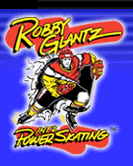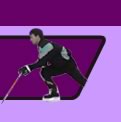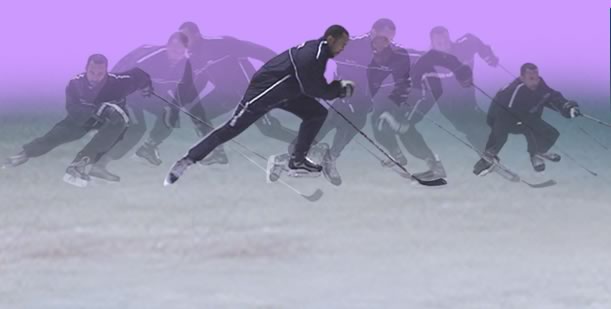Backward Skating
As published in USA Hockey Magazine, Coaches
Playbook Section, 02/06.
Backward skating is obviously a very
important skill to master for Ice Hockey…
and that goes for both Defensemen and
Forwards. The skating fundamentals needed
to be a better skater when going forward,
such as deep knee bend, bodyweight centered
over the skates, 100% power on each push,
etc., are very much the same when going
backwards.
A common myth in hockey is that only
Defensemen need to be strong backward
skaters. While it is true that for a lot of
the game a Defenseman will skate more
backwards than a Forward, it is still vital
that Forwards make every attempt to master
backward skating techniques.
The speed of the game is such that Forwards
are required to make quick change of
directions as well as controlled backward to
forward moves necessary to stay involved in
the play. Plus, when a Defenseman gets
caught up ice, the team depends on the
Forward to get back and cover for them,
making it very important that they can skate
proficiently backwards as well.
When picking up speed while going Backward
in a straight line, we like to see players
use Backward Crossovers to
help them accelerate and generate maximum
power right out of the gate.
Once a player gets moving however, we like
to see them use the Backward Stride,
which will give you better balance and less
side to side movement… plus, when used as a
Defenseman, it forces the Forward to make
the first move.
This technique is often called a C-Cut
or Half-Moon Cut… with the optimal
word being “cut”, as a player needs to cut
through the ice, up and out to the side to
generate speed (it looks like a “C” or
“Half-Moon” in the ice).
The following is a checklist to improve the
Backward Skating Stride (C-Cuts) and
Backward Crossovers… These techniques should
be practiced while going from goal line to
goal line (understanding that in a game a
player will almost never go from one end to
the other backwards, however it gives
players plenty of room to practice their
technique):
BACKWARD STRIDE
Key Points:
·
Bend your knees deeply so that they are
covering your toes.
·
The back is straight, head is up and eyes
are forward.
·
Start each push from directly under your
body.
·
Pivot the heel of the pushing foot up and
outward so that it is perpendicular to your
glide foot (forming an upside down letter
“L”).
There are three main parts to the
Backward Stride:
·
The Push:
Pushing one foot at a time and getting all
your body weight on each thrust, drive the
pushing foot full extension up and out to
the side…cutting a "C" or “Half-Moon” into
the ice.
·
The Glide:
While the pushing skate is extending, the
other skate should stay under the body,
gliding straight back to cover distance and
to gain speed.
·
The Recovery:
Then, return the pushing foot back to the
middle, under your body and repeat the exact
maneuver with the other foot (do not swivel
your hips like you are dancing, maintain as
direct a line as possible).
Skating Imagery for the Backward Stride:
When skating backward your body posture and
positioning are extremely important. You
should feel like you are sitting on a stool
with your backside almost parallel to the
ice, keeping your back straight and your
weight centered directly over the middle of
your skates. Positioning your upper body
and chest too far forward when going
backward will put too much weight to the
front part of the skate and definitely take
away from your balance, speed and power.
BACKWARD LATERAL CROSSOVERS
Key Points:
·
Maintain excellent kneebend, so that your
backside is parallel to the ice, while
keeping the back straight… not enough
kneebend will take away from your ability to
get to full extension, and dramatically take
away from your speed and power.
·
You should make one push at a time using all
your body weight centered over each push.
There are three main parts to the Backward
Lateral Crossover:
·
The Push:
The outside leg pushes a “C-Cut” into the
ice to full extension (see explanation above
in backward stride).
·
The Pull:
The inside leg pulls hard under the body
also to full extension, finishing on the
outside edge with a flick of the toe (your
legs should form the letter “X”).
·
The Recovery:
The Crossunder leg then recovers and steps
out wide to an inside edge. This leads to
better balance as well as covering greater
distance laterally… Repeat the maneuver the
other way until you have enough speed to
move into the Backward C-Cuts.
Skating Imagery for Backward Lateral
Crossover:
Try to picture this maneuver more as a
Crossunder rather than as a
Crossover, by keeping both skates on the ice
(not kicking over with the outside leg),
with that inside leg pulling under to gain
speed. I like to have my students make
believe they are playing “tug-of-war” with
their inside leg. In other words, try to
pull against the ice as much as possible
until you have fully stretched the inside
leg, in effect, “tugging” against the ice.





